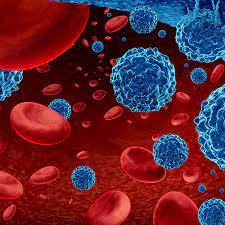Market Overview:
Cell and gene therapy is a cutting-edge form of medicine that uses genetic material or genetically modified cells to treat diseases. Scientists are focusing on developing cell and gene therapy as an alternative treatment for various cancers, blood disorders, genetic diseases, and more. Cell-based therapies can bring patients their own cells or donor cells that are genetically modified outside the body to produce therapeutic effects inside the body. This helps to effectively treat the disease while minimizing side effects. The market in the Middle East and Asia Pacific regions offers significant growth potential due to increasing investment in research and clinical trials, coupled with rising awareness about its benefits.
Market key trends:
The Middle East and Asia Pacific Cell and Gene Therapy Market is set to witness lucrative growth owing to increased research activities, strong government support and increasing strategic collaborations. For instance, South Korea has invested heavily to become a global hub for cellular and genetic innovation. China’s leadership has also expressed an ambitious commitment to advancing regenerative medicine. Countries such as India, Singapore and Hong Kong also have well-developed biotech sectors driving growth of cell and gene therapy market in the region. Furthermore, rising incidence of cancer, genetic disorders, cardiovascular diseases will continue generating high demand for effective treatments like cell and gene therapy in the foreseeable future. Growing geriatric population base prone to chronic diseases will further augment the market growth over the forecast period.
The Middle East and Asia Pacific Cell and Gene Therapy Market Demand is estimated to be valued at US$ 2,616.8 Million in 2023 and is expected to exhibit a CAGR of 17.3% over the forecast period 2021-2028, as highlighted in a new report published by Coherent Market Insights.
Porter’s Analysis
Threat of new entrants: The cell and gene therapy market requires high capital investment for research and development which poses a moderate threat of new entrants.
Bargaining power of buyers: The bargaining power of the buyers is moderate as the demand of cell and gene therapies is growing; however the therapies demand specialized clinical expertise.
Bargaining power of suppliers: Suppliers have moderate bargaining power due to availability of alternative suppliers and raw materials required for cell and gene therapies.
Threat of new substitutes: Potential substitute threat is moderate as new advanced therapies and innovative alternatives can emerge.
Competitive rivalry: The competitive rivalry is high owing to presence of global key players focusing on product innovation and portfolio expansion in the cell and gene therapy market.
Key Takeaways
The Middle East and Asia Pacific cell and gene therapy market is expected to witness high growth, exhibiting a CAGR of 17.3% over the forecast period, due to increasing prevalence of cancer and other chronic diseases.
The Asia Pacific region is projected to grow at the fastest rate owing to rising geriatric population, increasing healthcare expenditure, and growing regulatory approvals for cell and gene therapies in countries like China and India. However, North America dominates the market currently due to availability of advanced healthcare facilities and presence of major market players in the region.
Key players operating in the Middle East and Asia Pacific cell and gene therapy market are Novartis International AG, Pfizer, Inc., Sanofi S.A., Amgen, Inc., Regeneron Pharmaceuticals, Inc., F. Hoffmann-La Roche AG, Bluebird Bio, Inc. (Celgene Corporation), Gene biotherapeutics, Sibiono GeneTech Co. Ltd., Kolon TissueGene, Inc., Horama S.A., MeiraGTx Limited, Gilead Sciences, Inc., Biogen INC., Organogenesis, Inc., JCR Pharmaceuticals Co. Ltd, uniQure N.V., WuxiAppTec, Lonza, and Immuneel Therapeutics Pvt Ltd. Major players are focused on product approvals, launches and partnerships to strengthen their market position.
*Note:
- Source: Coherent Market Insights, Public sources, Desk research
- We have leveraged AI tools to mine information and compile it

